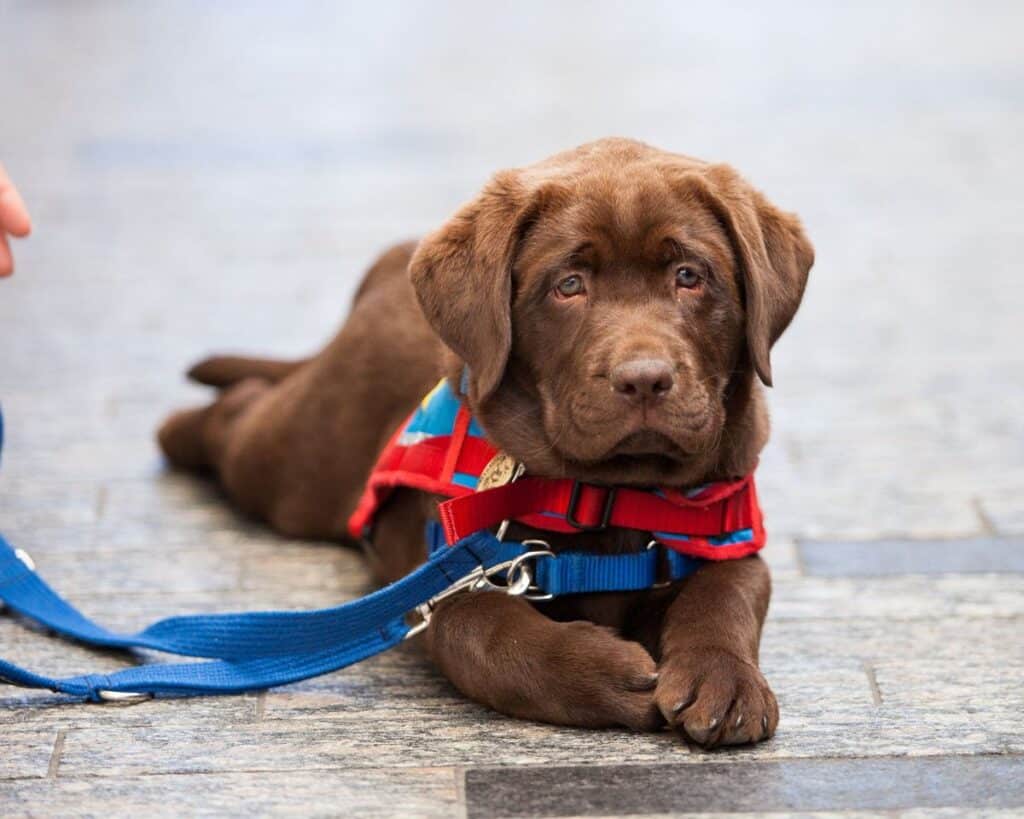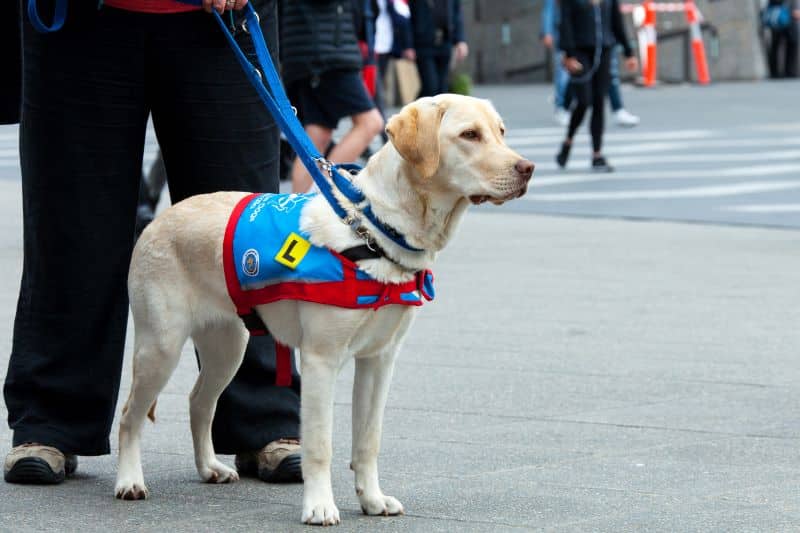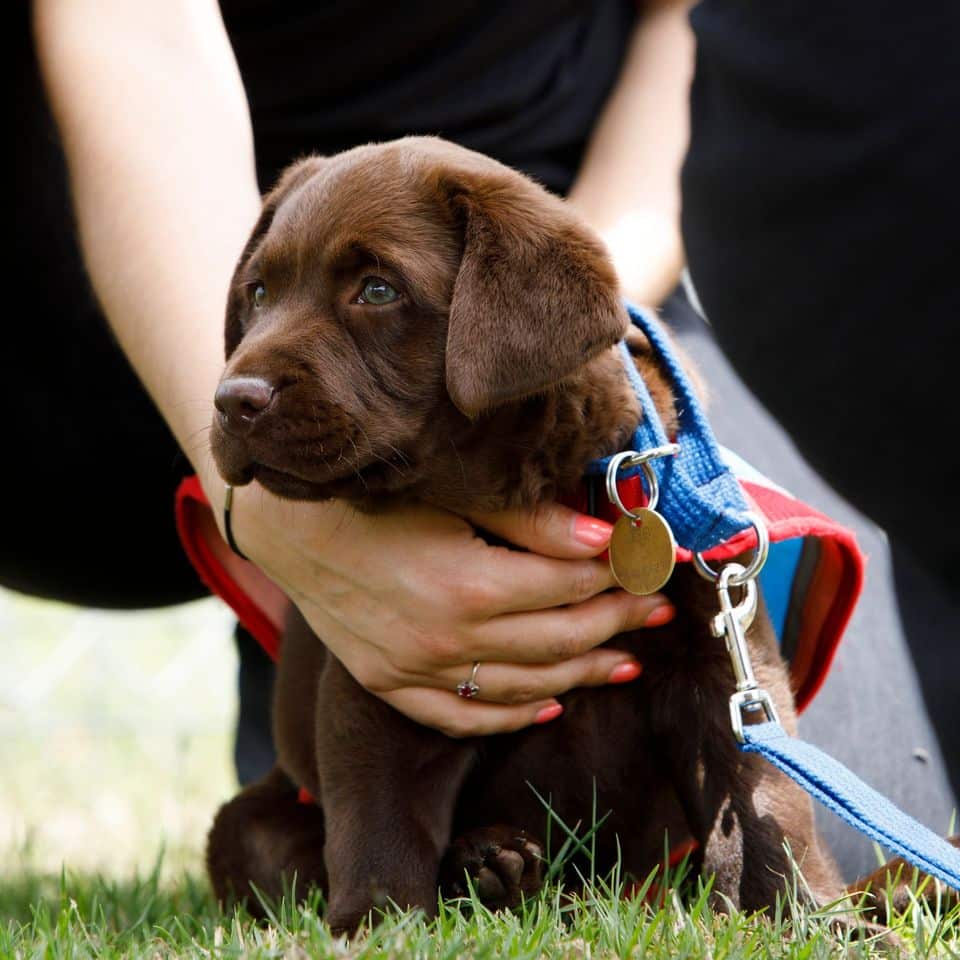Written by Assistance Dogs Australia
We understand it’s natural instinct to extend a hand and pet a beautiful dog when you see one. After all, most dogs are known to love attention and affection, and petting a dog makes us feel good too. However, there are rules about interacting with an assistance dog or assistance dog-in-training.
Discover what to do below!
What does an assistance dog do?
Great question!
“Assistance dog” is the term given to dogs who have been specifically trained and qualified to support a person living with a disability to have a better quality of life.
Some of these conditions include:
- Physical disabilities such as quadriplegia and cerebral palsy
- Autism
- Post-Traumatic Stress Disorder (PTSD)
Unlike a pet dog, these dogs are protected under law and guaranteed access to almost all public places in Australia. Read our Assistance Dogs Australia page and discover some of the incredible tasks these heroic dogs help their people with each day.

How can I interact with an assistance dog?
You should not interact with an assistance dog under any circumstances. Here are some reasons why:
- It is not a pet, it is a working dog. Although these dogs are very well trained, any form of interaction can be a big distraction.
- Sometimes it may look like the dog isn’t doing anything, but they need to stay alert and may be busy monitoring their human and/or surrounding environment for safety.
- It can be hard to tell if the dog is in the middle of a command or direction that is helping their human.
“When people approach assistance dogs to interact with them – this includes talking to them, patting, even making eye contact – without permission from their handler, it has the potential to distract them and even cause a setback, if the puppy is training.”
– Mikaela Toy, Apprentice Instructor
You should be able to easily identify an assistance dog or a pup-in-training as many will be wearing a vest with their title (although not always).
What’s the best thing to do around an assistance dog?
“We hope that the public appreciates that when assistance dogs are out-and-about, they are working and expected to be on task at all times.”
– Mikaela Toy
We recommend appreciating the beautiful service dog from a distance!
In rare cases you could also wait and ask the handler before interacting with the dog (i.e. before talking to or trying to touch it) and they can let you know if they feel safe and comfortable for the dog to be touched.
But please keep in mind that the person may not want to explain their disability to you, or have time to chat.
“It is always the best option to ignore the dog completely or politely ask their handler for the chance that they might allow you to pet the dog or shake the dog’s hand.”
– Mikaela Toy

Your freedom of mobility
Thank you for taking the time to read the above — your behaviour can make a big impact on the safety and comfort of an assistance dog and their handler!
Have an assistance dog yourself? Check out our heavily discounted assistance dogs insurance that empowers you to protect your bank account and your companion against big vet bills for illness, injury and much more. And if your furry friend is more of an average Joe then look over our Blue Badge pet insurance for some valuable inclusions and discounts.
Blue Badge Insurance understands that, just like service dogs, your disability converted car and other mobility equipment can be invaluable for enabling mobility and independence. This is why our insurance offering includes discounts of up to 25% on disability car insurance plus affordable wheelchair insurance and mobility scooter insurance.
Get in touch today to start your policy and read more about our Assistance Dogs Australia partnership here.








